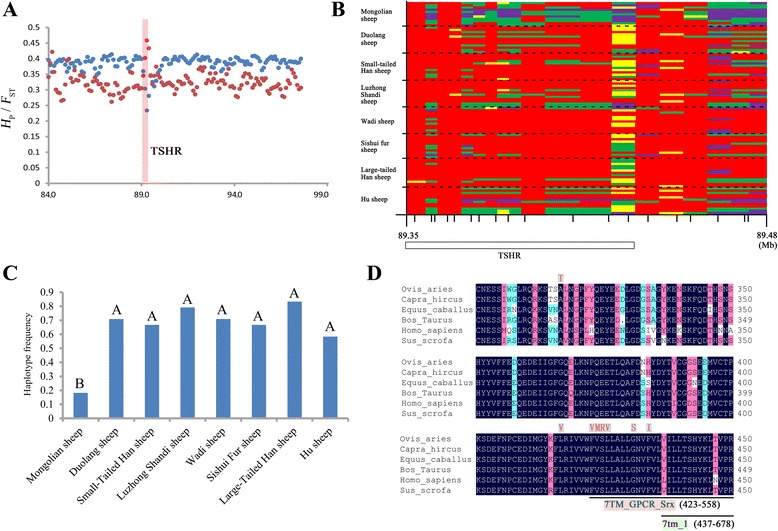Fig. 5.

The haplotype diversity and candidate mutations of TSHR. a Pooled heterozygosity, H P (in blue), and average fixation index between Mongolian sheep and Small-tailed Han sheep, F ST (in red), plotted for 200-kb windows spanning the region harboring TSHR (in pink shadow) on chr. 7. b Genetic variation in the region 89.35–89.48 Mb on chr. 7 across partial TSHR. Individual sheep (95 from 8 breeds) were genotyped using WaferGen genotyping. Dashed horizontal lines separate the 8 breeds. At the bottom of the figure, short tick marks represent individual SNPs. Long tick marks indicate the position in Mb. Red color: homozygous A-allele; green color: heterozygous; purple color: homozygous a-allele; yellow color: missing genotype call. c The haplotype frequencies of the 8 sheep breeds. The haplotype frequency of Mongolian sheep was significantly less than those of the other 7 breeds (p < 0.01). d A total of 8 missense variants in TSHR were identified by an amino acid sequence comparison (300–450) from 6 species: Ovis aries, Capra hircus, Equus caballus, Bos Taurus, Homo sapiens and Sus scrofa. Asterisks, double dots, and single dots denote fully, strongly, and weakly conserved residues, respectively. Conserved Protein Domain: 7TM_GPCR_Srx and 7tm_1 are both underlined
